what does it mean to watch clouds? what can it mean?
First off, I want to welcome the handful of new subscribers to this newsletter, a surprise to me since there have been a whopping four issues since I started it 2 years ago (“How to Write Nothing”?). Below are some details on upcoming events and recent projects, but first… I wanted to say something about watching clouds. (skip to the bottom if you dgaf about clouds)
Recently, near the summit of a favorite mountain, I came across a bench facing a view of the sea. But instead of sitting, I laid down on it and watched the marine layer as it passed overhead, breaking into distinct shapes that morphed as they went.
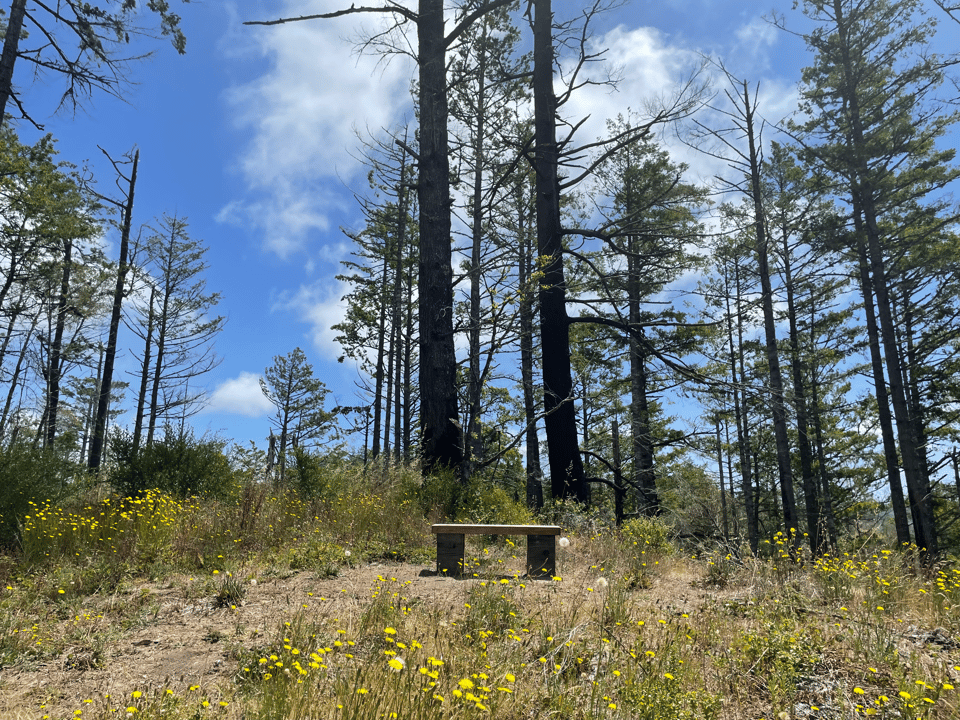
Cloudwatching is often invoked as a caricature of inactivity. When I first wrote the talk that How to Do Nothing was based on, for the slide in which I talk about doing nothing as a privilege, I drew a small figure lying in the grass, presumably watching clouds. It’s obviously not “productive,” but it can also be an image of political inactivity, i.e. how could you watch clouds at a time like this?
I started to wonder about why that is — what it is about clouds specifically that warrants such dismissal. And I boiled it down three ideas, misconceptions really, that break down under any kind of scrutiny and probably apply to many other things that don’t seem “worth” the attention. These are the ideas that 1) there’s nothing to see (clouds are simple); 2) they’re abstract, not “of this world”; and 3) aesthetic beauty is irrelevant to political motivation.
1. there’s nothing to see
As children, when we draw clouds, we tend to always draw the same bubbly shape; they seem simple, just eternal blobs of vapor. But even two minutes spent watching clouds will make time and change palpable in a way that few things can. Like so many ecological phenomena, clouds are lessons in complexity — in how to see a world where everything is always about to turn into something else.
Last year, while researching an article for Lux Magazine about the herbarium of the famous socialist Rosa Luxemburg, I came across a surprising description of cloudwatching. It was 1917, and Luxemburg, imprisoned for her antiwar activities, had just been transferred to a new prison. At the previous one, she had written rapturously to friends about the flowers, birds, and even townspeople she was able to observe, but here, she found only weeds within cracks in the paved courtyard. But this didn’t stop her from her observations of the natural world. Besides botanizing those weeds, she also wrote this in a letter to her friend Hans Diefenbach:
Here again today was a day of indescribable, unfathomable beauty. Usually, when things aren’t like this, I go back into my “den" at 10 in the morning in order to work, but today I couldn’t do it. I lay stretched out in my wicker chair, my head leaning back, and for hours gazed up at the sky without moving. On every side giant clouds forming into fantastic shapes rested against the flat pastel blue, which shimmered through between their ragged outlines. All around their edges the clouds were trimmed in bright white from the light of the sun, but in the middle they were a most expressive gray, which played in all shades from the tenderest touch of silver to the dark tone of storm clouds. Have you ever noticed how rich and lovely the color gray is? It contains something of nobility and restraint, [and] is capable of so many possibilities.
For anyone familiar with Luxemburg’s more political writings, this might sound surprising. But as I argued in my essay, her observations and intuitions about the natural world are of a piece with the political analyses she was making at the same time. In her letters from prison, I wrote, “there is no separating analysis and learning from a kind of amor mundi, a never-ending love affair with complexity and the desire to do justice to it. If the manifold shapes that life takes on can elude abstraction or even total description — whether in the garden plot or the mass strike — this is not only not a source of frustration, but a reason to celebrate.”
2. they’re not of this world
In high school, I used to carry around a clunky HP digital camera. I mostly used it to take pictures of clouds that I saw on my 20 minute walk home.
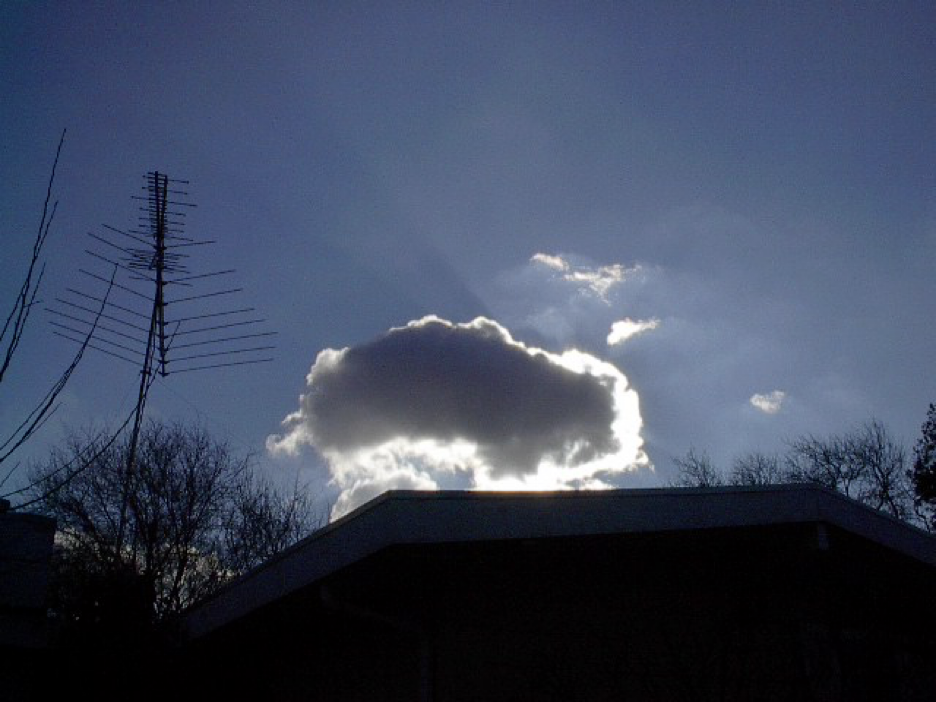
I never did anything with the photos or even showed them to anyone. It was more the act of taking them that mattered to me, a kind of acknowledgment that I felt was generally lacking. As I saw it, we spent all day at school being optimized for SATs, and then the rest of the day doing homework, and all anyone wanted to talk about was which colleges they were applying to. Which was important, and yet… all that time, there they were, those clouds. In some way that I couldn’t articulate at the time, they had a physical factualness, an earthliness, that seemed fundamentally at odds with what I was being asked to think about most of the time. Each cloud was a reminder of the atmosphere, of the sphere that it encircled, and that gravity was holding us to that very sphere, all for reasons we could not explain. And the importance of that seemed incommensurable with the importance of my homework.
Clouds are water moving through the sky — not just any water. The water. Our water. Last year I interviewed Robin Wall Kimmerer about her most recent book, The Serviceberry, and I told her about how alienated I felt from the water that comes out of my tap. Here is how she responded:
Let’s take your example of water, which might be easy to take for granted, flowing from your faucet. But when you stop and think, this amazing liquid is finite; we will never have more than we do now. Those drops cycle endlessly among us, across space and time. Remember, the water in your glass was once dinosaur pee. How did it get to your glass? These molecules that were once pee, will also be dew, the juice of an apple, the blood of a panda, and the sap of its bamboo meal. They were purified by soil, taken up by forests, returned to the sky, rumbled as thunderheads, and fell as a refreshing spring rain on your garden that made the flowers bloom. Think of it! Free water falling from the sky on every one of us. Did we earn it? Do we own it? Did we make it? Do we deserve it? Absolutely not and yet it comes to us just the same and without it, we would die. To me, that’s a gift.
There could be nothing less abstract than a cloud. It is ethereal, sure, but it is also a material reminder of earth, of earth-bound-ness. Clouds are not a representation of the climate, they are the climate — just this past week, on the coast of Portugal, the heat wave created a cloud so unusual it was covered in the New York Times.
3. aesthetic beauty is irrelevant to political motivation
It is still tempting to say, however, that clouds are not “of this world” in the social and political sense. Contemplating them does not have any demonstrable near-term effects, and at time when such ugly things are happening, their beauty risks appearing not only irrelevant, but even offensive in contrast.
I find that there is a type of zero-sum, utilitarian worldview that imagines that any mental effort put toward one type of thing necessarily takes from another: Every moment you spent watching clouds was a moment you could have spent doing something substantial. Besides overlooking the very real phenomenon of activist burnout, I think this fails to understand the actual mechanism of motivation — not the knee-jerk motivation of subjects in a behavioral science experiment, but the the more fundamental type, the kind that comes from love, moral conviction, and the capacity to be moved.
I have long kept a printed-out quote from Rebecca Solnit’s book Orwell’s Roses folded up in my own copy of How to Do Nothing, as a reminder of what the enjoyment of beauty has to do with political responsibility. It just happens to have to do with pictures of clouds:
The artist Zoe Leonard was bashful about making beautiful images during the AIDS crisis and said so to fellow artist and activist David Wojnarowicz, who replied, ‘Zoe, these are so beautiful, and that’s what we’re fighting for. We’re being angry and complaining because we have to, but where we want to go is back to beauty. If you let go of that, we don’t have anywhere to go.” So beauty can be both what one does not wish to change and where one wishes to go, the compass or rather North Star for change. Leonard reflects on their interchange: ‘You know, we were all just too busy for beauty. We were too angry for beauty. We were too heartbroken for beauty. I felt like an asshole with these picture[s] of clouds, but David was right. You go through all of the fighting not because you want to fight, but because you want to get somewhere as a a people. You want to help create a world where you can sit around and think about clouds. That should be our right as human beings.’
It is possible, even likely, that you’d feel terror, heartbreak, and rage while looking at clouds, at the exact same time that you feel a self-annihilating love of this world. In fact, I would be surprised if, looking at clouds for the first time in a while, many people don’t start crying just from the sheer volume of emotions we can’t allow ourselves to fully feel about what’s happening. To me, it’s so important that that conduit stays open. A fiercely protected capacity for love is, in the end, how we stay alive against the encroachments of cynicism and despair.
In case it’s been a while since you’ve sat around and thought about clouds, or you don’t have a good time or place to watch them, here are a couple of minutes of what was passing over the mountain summit that day:

recent(ish) things
• I wrote the afterword for the North American edition of Nan Shepherd’s 1977 classic, The Living Mountain (and also read my afterword for the audiobook, which means you’ll hear me right after Tilda Swinton!). It was excerpted in The Nation, but I highly recommend the book itself, which is short and bracing.
• I collaborated with the folks behind Five Radio Stations to create “Rose Garden Radio,” an audio archive of ambient sounds at the Morcom Rose Garden. Yes, there’s a pan flute.
• I contributed an essay on First Reformed, a favorite film of mine that deals with the moral dimension of the climate crisis, for The Approach, a new print publication “focusing on how to approach — thwart, upend, sabotage, survive — autocracy.” You can subscribe here.
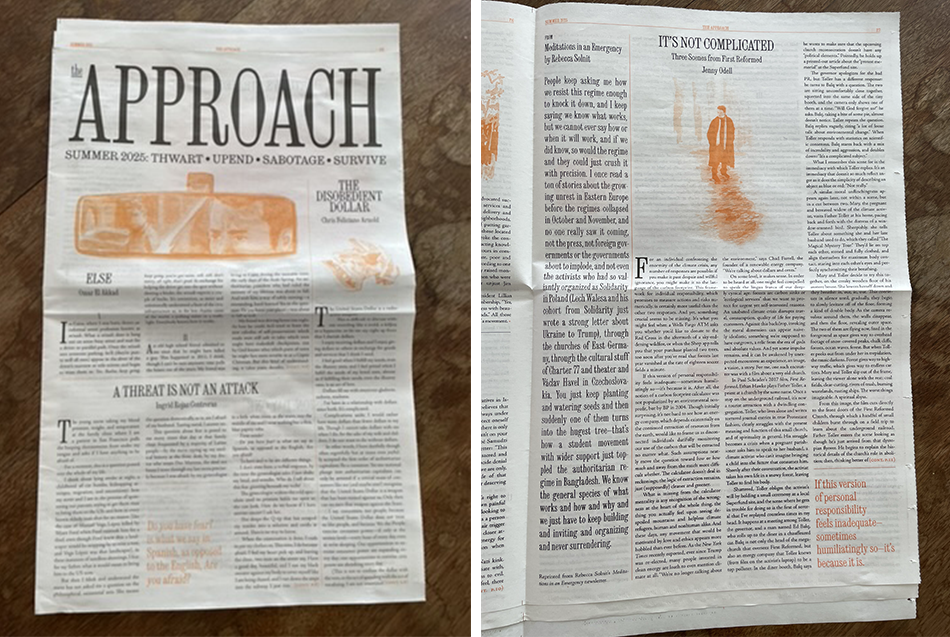
upcoming events
• July 19 - screening of Maintenance Artist, a documentary about Mierle Laderman Ukeles (who I mention in How to Do Nothing). I’ll be leading the conversation and Q&A with filmmaker Toby Perl Freilich afterward. 3:30pm at the AMC Kabuki in SF.
• August 2 - conversation with Lio Min about their second novel, The L.O.V.E. Club. In my first-ever newsletter, I mentioned how much I loved Lio’s first book, Beating Heart Baby. 3:30pm at the Asian Branch of the Oakland Public Library.
• September 6 - reading from Saving Time at a time-themed event. 5pm at KADIST in SF.
• September 10 - conversation with Elaine Castillo about her book Moderation, a novel whose enchantingly wry protagonist is a content moderator for a VR company. Main branch of the SF Public Library, time TBD.

uncategorized
• Because I’m working on a book about repair, I have a small request: I am looking to interview a femme car mechanic, preferably in the East Bay or wider Bay Area. If you have any tips, please reply to this email. Also open to suggestions for other local repair workers if they seem like talkers.
• I never thought this would happen, but there is now a Norwegian punk song based on How to Do Nothing… and my name is in the song 😎
• I’ve really been enjoying this Cole Pulice album ever since I saw them live at The Lab.
That’s it for now. I will leave you with two recent photos from the rose garden:
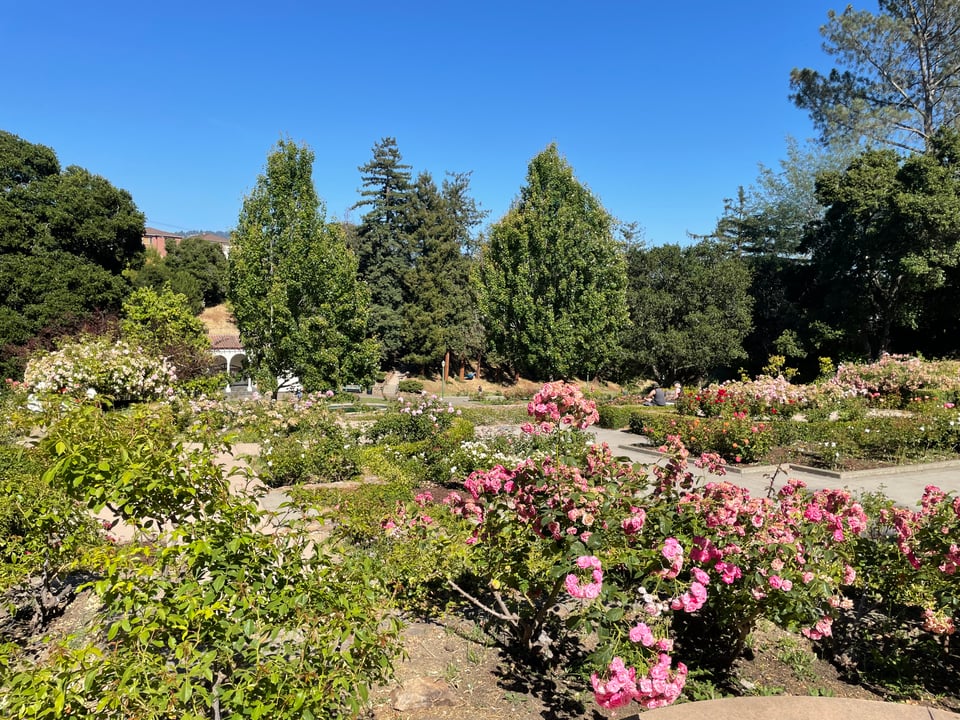
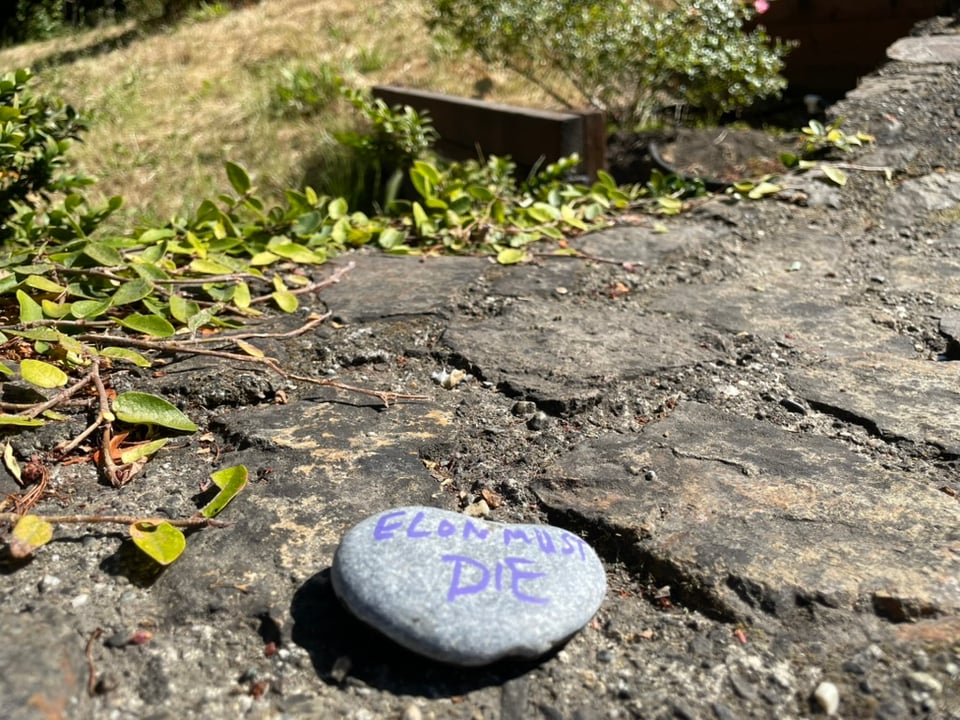
As always,
Jenny